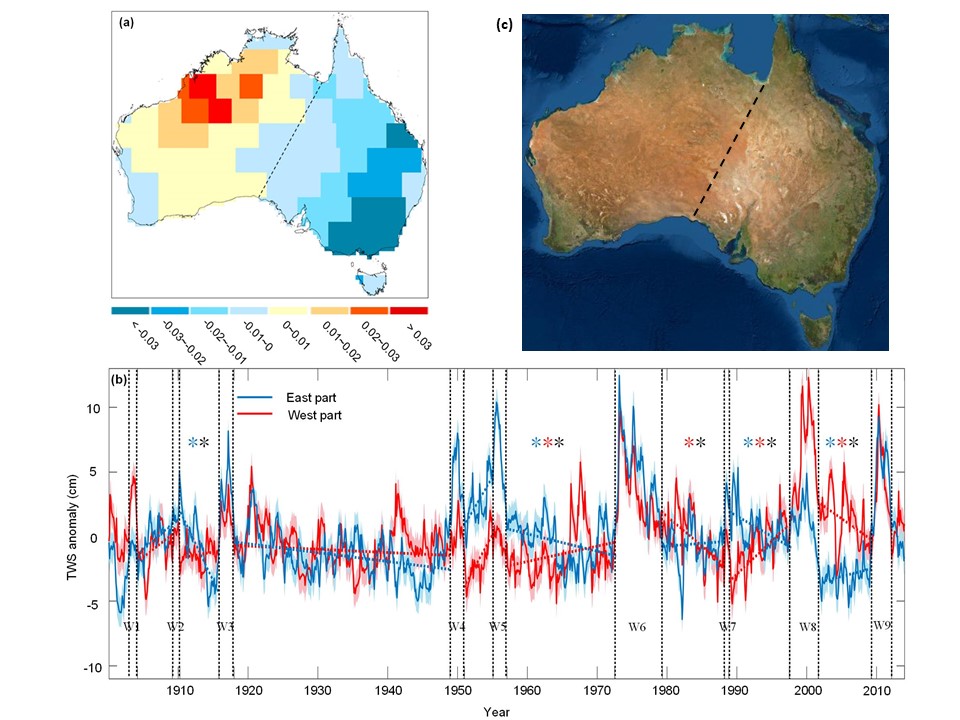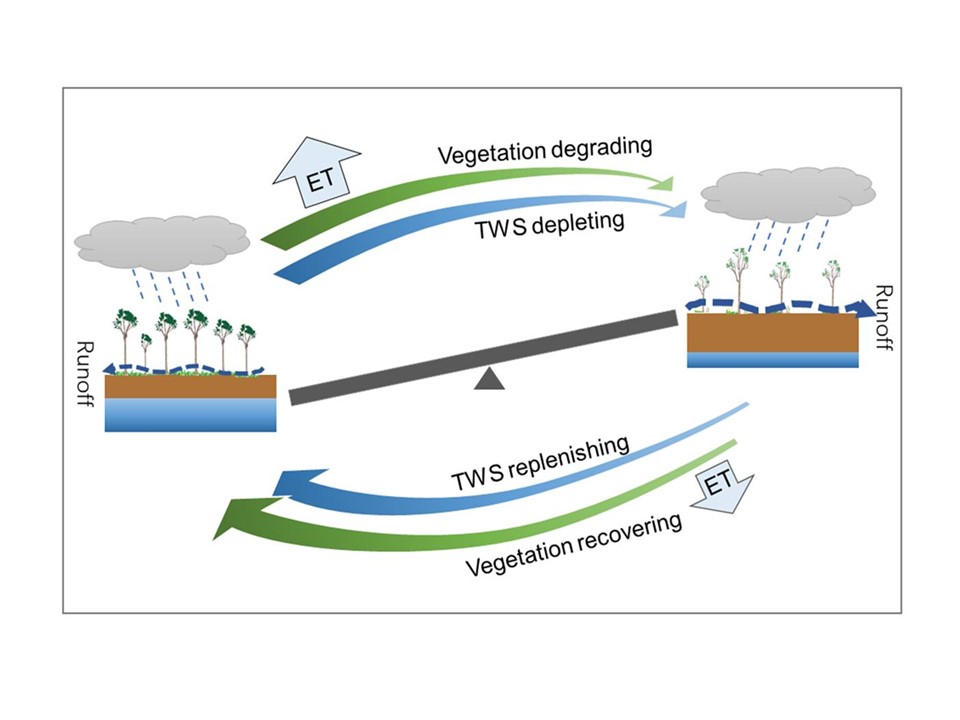Nature has played on a continental scale water-storage seesaw for five decades in Australia

A research team based at the National Centre for Groundwater Research and Training, at the Flinders University of South Australia, recently reported an opposite temporal pattern of terrestrial water storage (TWS) between eastern and western Australia. The researchers refer to this phenomenon as the TWS seesaws, somewhat similar to its counterparts of sea surface temperature or atmospheric pressure in different regions of oceans.
The TWS seesaw phenomenon is characterised by eastern Australia gaining water, while western Australia is losing water, and vice versa. Strong La Niña induced continent-wide wetting, resets this pattern, leaving each seesaw to last for 11± 5 years. It is found that the seesaw phenomenon disappears if the interval between two consecutive wetting episodes is too short or too long.
This TWS seesaw phenomenon is hidden in the time series of episodic wetting events in addition to large baseline interannual variability. The team was able to document five TWS seesaws in the last 110 years, with four consecutive seesaws over the past five decades.

Initially, it was thought this TWS seesaw would be associated with a similar precipitation seesaw between the two parts of Australia. However, they found that precipitation itself does not explain the whole picture of the TWS seesaw. A concept of woody vegetation – soil moisture interactions in response to large interannual precipitation variability, seems to nicely explain the TWS seesaws.
Vegetation degrades for a TWS-losing phase. Woody vegetation cover deviates from its normal condition, becoming very poor and of high flammability, at the end when the wetting episode comes. After this wetting episode, the starting poor woody vegetation cover is more likely to gain moisture in subsequent normal years, i.e., a TWS-gaining seesaw phase, which supports vegetation recovery.
At the end of this TWS-gaining phase when the next wetting episode comes, the better-than-normal woody vegetation helps the landscape to replenish its moisture storage. Here is where the problem roots. This sudden moisture supply makes the healthy woody vegetation cover grows even thicker in a very short period. This, now much-thicker-than normal, woody vegetation continuously depletes the moisture storage and degrades the vegetation cover in the subsequent years. This turns a previous TWS-gaining phase to now a losing phase.

This soil moisture-vegetation interactions in response to episodic wetting events nicely explains the TWS seesaw and its resetting patterns. It also explains why the seesaw disappears if the two wetting episodes are too close (1950-1955) or too far (1920-1950). If the interval is too short, woody vegetation still relies on moisture replenishment from the wetting episode. If it is too long, woody vegetation will develop an equilibrium with the climate norm of that interval.
The TWS seesaws and the possible mechanism proposed here have great implications for management of bushfire risk, water resources and agriculture in Australia, as discussed in the paper. Further investigation continues into what influences the TWS seesaw may have on near-surface microclimate and on terrestrial carbon assimilation. It remains to be seen if this continental-scale seesaw phenomenon has an impact on climate systems as oceanic seesaws do.
